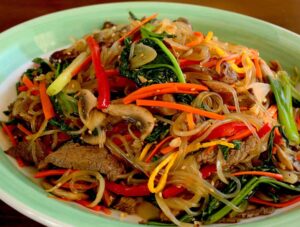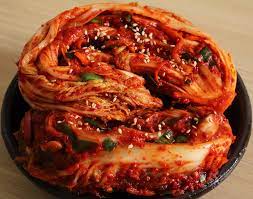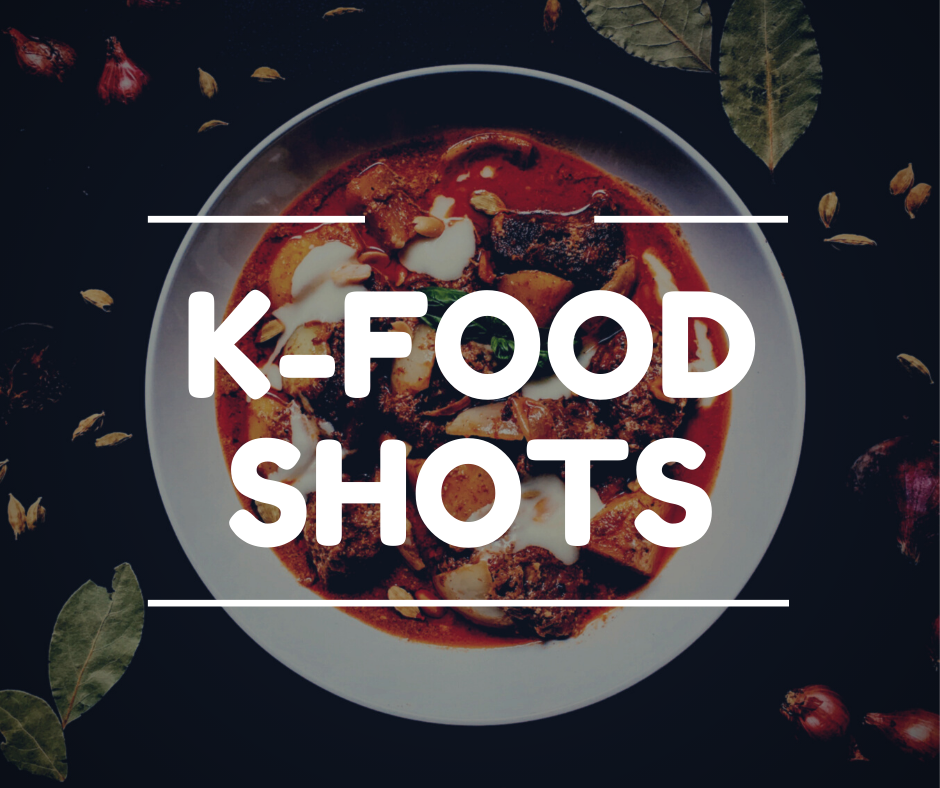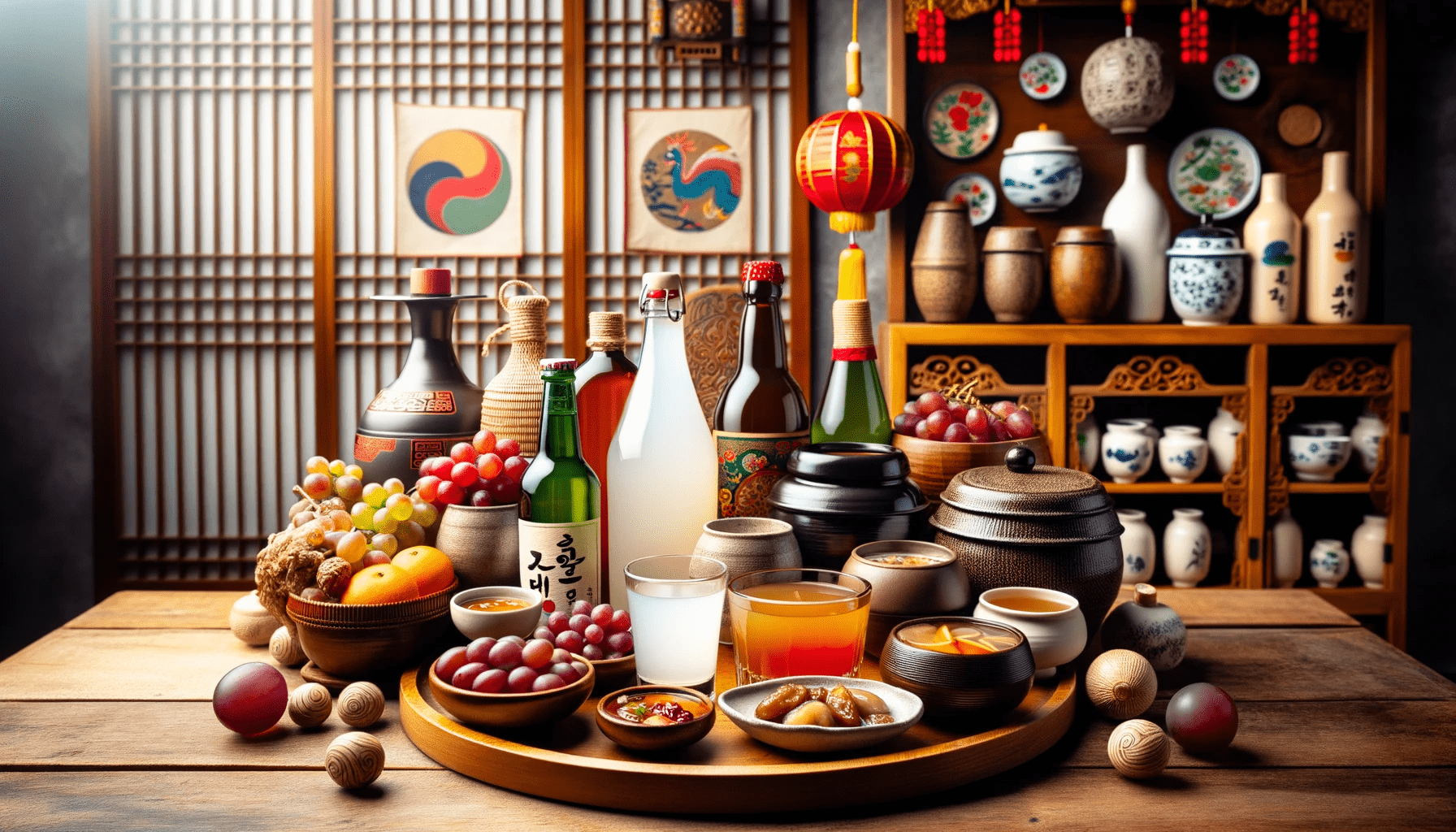Welcome to the ultimate guide to Korean cuisine! If you’re a fan of delicious and exotic food, you’re in for a real treat. Korean food is known for its unique blend of flavors and healthy ingredients, and it’s no wonder that it’s becoming increasingly popular around the world.
Korean cuisine is a gastronomic delight unlike any other. A culinary journey through its diverse flavors and textures is nothing short of an extraordinary experience. Korean Food Foundation
TL;DR
- Korean cuisine offers a diverse range of flavors and textures that will delight any food lover.
- Kimchi, a spicy fermented cabbage dish, is one of the most famous and beloved Korean foods.
- Korean barbecue, such as galbi and bulgogi, is a must-try for meat lovers.
- Bibimbap, a mixed rice dish with vegetables and meat, is a healthy and filling option.
- Korean fried chicken is crispy, juicy, and addictive – perfect for a night out with friends.
- Banchan, or side dishes, are an essential part of any Korean meal and add variety and flavor.
- Korean street food, such as tteokbokki and hotteok, is cheap, delicious, and readily available.
- Soju, a popular Korean alcoholic beverage, is a must-try for those looking to immerse themselves in Korean culture.
- Traditional Korean desserts, such as patbingsu and hotteok, offer a sweet and satisfying end to any meal.
- With its emphasis on fresh ingredients and balanced flavors, Korean cuisine is a healthy and flavorful option for any foodie.
From the succulent taste of kimchi to the fiery kick of tteokbokki, Korean food has something for everyone!
But before we dive into the mouth-watering dishes, let’s take a trip down memory lane and explore the rich history of Korean cuisine. Korean food has been heavily influenced by its neighbors, such as China and Japan, as well as its own geography and climate.
The first written record of Korean cuisine dates back to the 14th century, during the Joseon Dynasty, where it was documented in a book called “Eumsik Dimibang.” Since then, Korean food has continued to evolve and adapt to new tastes and trends, resulting in a unique culinary experience.
To make your exploration into this unique cuisine even better, I present you with ‘The Ultimate Guide to K-Food: A Delicious Journey Through Korean Cuisine.
Now, onto the good stuff – the must-try Korean dishes! Of course, no Korean meal is complete without kimchi, a spicy and sour fermented cabbage dish that is a staple in Korean cuisine.

Healthy bi bim bap with egg and hot sauce
But there’s so much more to try, like bibimbap, a rice bowl topped with various vegetables, meats, and a fried egg, and bulgogi, marinated beef that is grilled to perfection.
Don’t forget about japchae, a dish made with sweet potato noodles and a mix of vegetables and meats, and tteokbokki, spicy rice cakes that will make your taste buds sing.
And for those who love a good soup, try out the classic samgyetang, a chicken soup stuffed with rice and ginseng.
This comprehensive guide will take you on a mouthwatering tour through all that Korea’s delectable dishes have to offer – from traditional staples to inventive modern delicacies.
Delve into this exquisite world of flavor and discover why Korean food is truly one of the most delicious cuisines in the world!
Introduction To K-Food
Let’s dive into the world of K-Food! There’s an abundance of delicious dishes to explore, from classic favorites to modern twists on traditional recipes. We’ll take a look at the different types of K-Food, as well as some of the most popular dishes from the Korean Cuisine.
Types Of K-Food
Are you ready to dive into the delicious and unique world of Korean cuisine?
From tasty noodles like Korean Ramen to traditional side dishes such as kimchi, there is something for everyone in this flavorful culture.
Whether you are a fan of sweet or savory dishes, K-food has it all!
The variety can be overwhelming, but don’t worry – I’m here to take you on an adventure through all the types of food Korea has to offer.
Let’s get started!
Popular K-Food Dishes
Now that you know about the basics of K-food, let’s explore some popular dishes!
Korean BBQ is a must-try for all meat lovers – it’s marinated in a delicious sauce and cooked to perfection.
Source: Mark Wiens
For those who prefer seafood, try Jeon – small pancakes made with fish or shrimp.
And don’t forget kimchi paste, which is used as an accompaniment to many traditional dishes. It has a spicy kick that will leave your taste buds tingling!
So if you’re looking for something truly special and flavorful, give these K-Food staples a try – you won’t be disappointed!
Don’t forget about japchae, a dish made with sweet potato noodles and a mix of vegetables and meats, and tteokbokki, spicy rice cakes that will make your taste buds sing. And for those who love a good soup, try out the classic samgyetang, a chicken soup stuffed with rice and ginseng.

tteokbokki
Each dish has its own unique combination of ingredients and preparation methods, making each bite a new adventure. For example, bibimbap is traditionally served in a hot stone bowl, which cooks the raw egg on top of the rice and adds a crispy texture to the dish.
Common Ingredients In Korean Cuisine
Korean cuisine is a unique blend of flavors and ingredients, many of which are staples in traditional Korean cooking.
Some of the most common ingredients used in Korea include Korean Instant Noodles, Bean Paste, Soybean Paste, Gochujang and Kimchi. All these items add flavor to dishes while also providing an additional layer of complexity that makes them so distinctively delicious.
Each ingredient has its own individual characteristics and can be combined with other herbs or spices to create flavorful dishes. For instance, Korean bean paste provides a subtle sweetness that enhances the taste profile of any meal it is added to; similarly, Korean soybean paste adds a salty yet savory umami flavor to soups and sauces.
Meanwhile, Gochujang is spicy red chili pepper paste commonly used as a condiment for rice dishes; Lastly, Korean kimchi is fermented cabbage served as side dish loaded with probiotics beneficial for digestive health.
With all these great ingredients on hand you’ll have no trouble creating some amazing tasting dishes!
Now let’s move onto learning about traditional cooking techniques and equipment essential for making authentic Korean meals.
And what’s a meal without a drink? Korean cuisine has a variety of traditional drinks, like makgeolli, a lightly carbonated rice wine that is usually served cold, and soju, a distilled alcohol that is similar to vodka. Both are made from natural ingredients and pair well with spicy Korean dishes.

Bungeoppang-Korean-fish-
But wait, there’s more! Korean snacks are a great way to satisfy your cravings between meals. Try out some popular snacks like bungeoppang, a fish-shaped pastry filled with sweet red bean paste, or hoppang, a steamed bun filled with savory meat and vegetables.
Traditional Cooking Techniques And Equipment
Cooking Korean food is like a journey of discovery, finding the flavors and textures that make each traditional dish so special.
Cooking with the right ingredients is essential for creating authentic dishes – from korean sesame oil to soy sauce, chili powder to red pepper powder, and rice vinegar.
All these items have distinct flavor profiles which blend together in perfect harmony when used correctly.
Using different cooking techniques also helps bring out the unique flavors of Korean cuisine.
For example, steaming brings out delicate aromas while braising creates an intense depth of flavor.
Grilling and frying are other popular methods which can be used to create delicious appetizers or main courses.
The key is understanding how best to combine your chosen ingredients with various cooking equipment such as woks, stone pots, grills and steamers.
Understanding the nuances between all these elements means you’ll soon be able to recreate some of Korea’s most beloved dishes at home – from bibimbap to bulgogi and everything in between.
Popular Dishes From Korean Cuisine
Korean cuisine is one of the most popular cuisines in the world and for good reason! Kimchi, a spicy fermented cabbage dish, is one of the most iconic dishes, and a staple in any Korean household. Bibimbap, a rice dish with various vegetables and meats, is also popular.
Bulgogi, marinated beef strips, is another favorite. Japchae, a sweet and savory noodle dish, is also a fan favorite. Haemul Pajeon, a seafood and green onion pancake, is a must-try dish.
Samgyetang, a ginseng chicken soup, is a hearty dish that is great in the wintertime. Soondubu Jjigae, a spicy tofu stew, is a delicious option. Galbi, marinated short ribs, are a great way to enjoy beef. Gimbap, rice and seaweed rolls, is a great snack or light meal. Mandu, Korean dumplings, are a delicious snack or appetizer.
Gamjatang, a pork spine and potato soup, is a hearty dish. Jeyuk Bokkeum, stir-fried pork, is a great way to enjoy pork. Tteokbokki, spicy rice cakes, are a popular street food. Kongguksu, a cold soybean noodle soup, is great in the summertime. Bibim Naengmyeon, cold noodles in a spicy sauce, is a delicious dish.
How to Make Samgyetang
Source: Aaron
Kimchi
Kimchi is a quintessential Korean dish that no trip to Korea would be complete without.
It’s made from Korean radish kimchi and other vegetables or fruits, fermented in brine for weeks with the addition of spices—generally garlic, ginger, green onion and chili pepper flakes—and can range from lightly sweet to intensely hot and pungent.
Even better? Kimchi has been shown to have numerous health benefits!
For those wanting an easy way to enjoy this traditional food, there are even premade mixes available such as the popular Korean kimchi pancake mix.
With its bold flavor profile and immense popularity both inside and outside of Korea, there’s no wonder why it’ll stay around for years to come.
source: emmymade
Bibimbap
Moving on from Kimchi, another popular Korean dish is Bibimbap. It’s a bowl of steamed rice topped with vegetables, egg and slices of meat or tofu that are all seasoned with gochujang (a korean chili paste) and doenjang (korean red pepper paste).

Bi Bim Bap, Korean Cuisine.
A perfect blend between spicy and savory flavors make this meal as delicious to eat as it looks! Not only does bibimbap offer great flavor but also provides a balanced nutrition for those who enjoy eating healthy.
Although the original recipe dates back centuries ago, bibimbap still remains one of the most beloved dishes in Korea today. With its unique ingredients and variety of toppings, you can create your own combination each time you have it – making it an exciting choice every time!
Bulgogi
Moving on to another staple in Korean cuisine, let’s talk about Bulgogi.
This is a dish of thinly sliced beef marinated in a combination of soy sauce, sugar, sesame oil and rice wine. The meat is then cooked quickly over an open flame or charcoal grill – giving it that signature smoky flavor you can only get from authentic Korean BBQ!
It’s usually served with steamed white rice and kimchi for the perfect balance between savory and spicy flavors.
Bulgogi makes for a great meal whether you’re looking for something quick and easy or want to take your time grilling up some delicious cuts of meat.
Japchae
Next up, let’s talk about Japchae.
This traditional Korean dish is made with stir-fried vegetables and thin strips of marinated beef or pork.
It comes together with a combination of soy sauce, sugar, sesame oil and garlic – all balanced out by the sweetness of Korean rice cake mix and red bean paste.

The result? A beautifully colored array of flavors that’ll have you coming back for more!
Plus, it’s great as an appetizer or side dish to any meal.
So if you’re looking for something light yet flavorful that won’t take too long to make, this could be your go-to.
Historical Perspectives On Korean Cuisine
Korean cuisine has a rich and long history, with traditional dishes dating back centuries. These recipes were crafted with the use of various ingredients, including korean rice wine, korean fermented soybean paste, korean sesame seeds, korean anchovy sauce and korean canned sardines.
These ingredients have been used in Korean cooking for generations and continue to be essential components in many popular dishes today.
In addition to being flavorful additions to meals, these items are also known for their health benefits due to their high-quality proteins and vitamins. Koreans have always placed emphasis on healthy eating habits, so it’s no surprise that these ingredients remain staples in home kitchens throughout Korea.
With this knowledge comes the power to explore unfamiliar foods while still maintaining authentic tastes – allowing us the opportunity to make our own delicious creations! And speaking of exploring best K-food products…
Best K-Food Products
I’m super excited to talk about some of the best K-food products out there! Let’s start with Kimchi, a staple of Korean cuisine. It’s so versatile and packed with flavour, you can’t go wrong! Then there’s Bibimbap, a classic dish of rice, vegetables and meat; it’s a great way to get your daily dose of vitamins.
Last but not least, Bulgogi, a traditional marinated barbecue beef dish – it’s not just delicious but also so easy to prepare!
Kimchi
Ah, kimchi! This traditional Korean food is so much more than just a condiment; it’s an essential part of the Korean culinary experience.
Whether you enjoy it mild or fiery hot, kimchi is usually made with fermented cabbage and daikon radish seasoned with garlic, ginger, and gochugaru, a spicy red pepper powder.
To make this already-delicious dish truly special, don’t forget to add in some fish sauce and hot sauce for that added kick of flavor – they’re staples of Korean cuisine after all!

Korean Food-kimchi
Kimchi is such a versatile ingredient that can be enjoyed as a side dish on its own or used as an addition to soups, stews and stir fries. No matter how you choose to enjoy it, one thing’s for sure: no meal is complete without a delicious helping of kimchi!
Bibimbap
Now let’s move on to another classic Korean dish that never fails to satisfy: Bibimbap!
This delicious meal usually consists of steamed white rice topped with a variety of vegetables and proteins, all mixed together with gochujang – a savory red pepper paste.
Of course, you can’t forget the kimchi either; it adds an extra spicy kick to this already flavorful dish.
To make bibimbap even more special, try adding in some sliced beef or fish cake for protein as well as crunchy rice cakes for texture.
All these flavors combined make bibimbap one of the most iconic dishes in Korea – no wonder it’s beloved by locals and tourists alike!
Bulgogi
Now let’s move on to another classic Korean dish that never fails to satisfy: Bulgogi!
This popular marinated beef dish is a favorite among K-Food fans for its robust flavors. The main ingredients include thinly sliced beef, korean spicy sauce, and korean rice wine vinegar. When combined with other traditional seasonings such as garlic, sesame oil, and green onions, the resulting flavor profile is sure to tantalize your taste buds.
The marinade helps tenderize the meat while bringing out all of those wonderful savory notes that make bulgogi so special. Enjoy this succulent meal either over white rice or wrapped up in some lettuce leaves – it’s delicious either way!
K-Food Fusion And Modern Trends
The Korean cuisine scene is constantly evolving, with new flavors and combinations being introduced every day. It’s no wonder that K-Food Fusion has become a popular trend in the culinary world!
From creative snacks made with Korean ingredients to modern dishes combining traditional elements with innovative techniques, there are countless delicious options available for foodies looking to explore this unique style of cooking.
As an expert in all things kimchi, I’m always excited by what can be achieved when experimenting with different types of flavors and styles of cooking. For example, you can make savory onion rings baked in gochujang sauce or mochi filled with sweet red bean paste and veggies as tasty snacks.
For something more substantial, why not try seaweed kimbap rolls paired with spicy seaweed noodle soup? Or even tuna fried rice topped off with ramen salad dressed in a zesty egg yolk and spicy tuna dressing? Whatever your taste buds desire, it’s easy to find something new and exciting within the realm of K-Food Fusion.
From classic staples like korean snacks and dried seaweed to more inventive creations featuring canned tuna, now is the perfect time to enjoy some unique fusion dishes from Korea. So get out your chopsticks and let’s start exploring – Bon appetit!
Frequently Asked Questions
What Are The Health Benefits Of K-Food?
K-Food has been gaining popularity for its delicious flavor profile and health benefits. As a Korean cuisine expert, I’m here to discuss the numerous health benefits of eating K-Food.
From high levels of vitamins and minerals to antioxidant properties, there’s no denying that consuming K-Food can improve your overall wellbeing.
The various fermented ingredients like kimchi provide probiotics which help with digestion while other dishes such as bibimbap offer a mix of vegetables and proteins that are low in calories yet still highly nutritious.
Eating K-food is also an excellent way to get more fiber into your diet, helping you feel fuller longer while maintaining healthy weight goals.
So if you’re looking for ways to stay fit and keep your body nourished, turn to K-Food!
Are There Any K-Food Dishes That Can Be Made Vegan?
Korean cuisine is becoming increasingly popular around the world, and with that comes questions about how to adapt it for vegan lifestyles.
The good news is – yes! There are several dishes that you can make vegan-friendly while still keeping all of the flavor and deliciousness of traditional K-Food.
From homemade kimchi to bibimbap without meat or fish, there’s plenty of options available to those looking to enjoy a tasty Korean meal without compromising their dietary restrictions.
What Is The Difference Between K-Food And Other Asian Cuisines?
K-food stands out from other Asian cuisines in a number of ways. First and foremost, it’s unique flavor combinations provide a truly special experience that is sure to please the taste buds!
Korean cuisine has a rich history, with distinct regional differences throughout the country – along with an emphasis on fermentation and pickling techniques which give dishes their signature flavors.
Additionally, k-food offers plenty of vegan options, so no one need miss out on all its deliciousness!
Is K-Food Spicy?
K-Food is often associated with spiciness, however the truth is that it can be as mild or spicy as you like.
As a Korean cuisine expert, I’d say there’s no one definitive answer to this question. It all depends on the dish and its ingredients – many dishes have subtle flavours which aren’t necessarily hot or spicy at all! You may even find dishes with both sweet and savoury elements too.
Therefore, if spice isn’t your thing, not to worry; K-Food offers plenty of delicious alternatives for everyone to enjoy!
Is There A Way To Find K-Food Restaurants Near Me?
If you’re looking for a great place to enjoy some delicious K-Food, there’s certainly a way to find restaurants near you!
With the help of online search engines and local guides, it’s easy to discover places in your area that serve up this flavorful cuisine.
Whether it’s Korean BBQ or classic bibimbap, you can be sure to find something tasty.
Don’t forget to ask around too – locals will often have their favorite spots they love sharing with others.
Bon appetite!
Conclusion
Korean food is an incredible journey for the senses. From its health benefits and vegan-friendly options to its unique flavors, it’s a cuisine that should be celebrated by everyone.
Personally, I’m amazed at how versatile K-Food can be; no matter what kind of taste you’re craving, there will always be something delicious waiting for you!
What really sets Korean food apart from other Asian cuisines is its use of spices—it packs just enough heat to tantalize your taste buds without overwhelming them.
As far as finding restaurants near me? With so many amazing eateries popping up around the country, it’s never been easier to get your hands on some delicious K-Food.
To sum things up: If you’re looking for a culinary adventure like no other, look no further than K-Food! Its flavor profile and dietary options make it perfect for any palate or lifestyle – you won’t regret taking this delectable journey into the world of Korean cuisine.
Bon appétit!






0 Comments